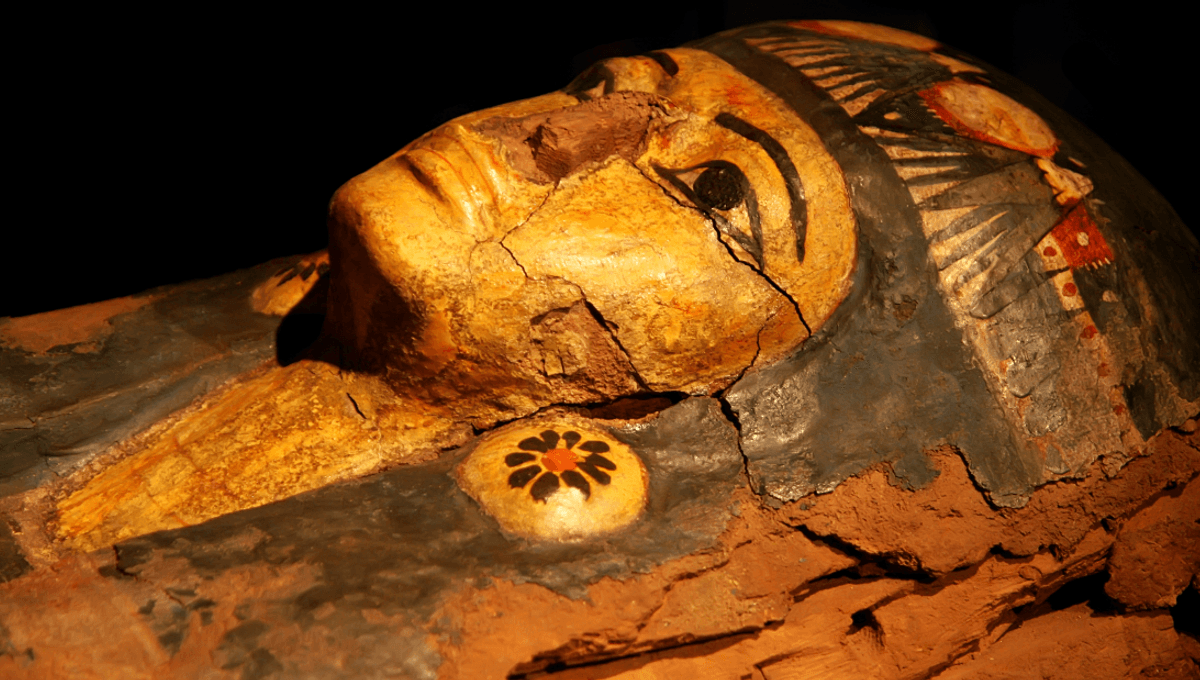
The mummification process is perhaps one of the most talked-about aspects of Ancient Egyptian life. It’s a complex process that we’re still trying to understand, not least because trying to step into the mindset of people living thousands of years ago is tricky when you’re burdened with the cultural norms of the 21st century.
Still, we know a bit about what they did to their skin, we know a bit about what they did to their organs, but that got us wondering – what happened to the eyes? We sat down with Egyptologist Dr Campbell Price from the University of Liverpool, and author of Brief Histories: Ancient Egypt, to find out.
What is mummification?
Most of us got a crash course in mummification during school. Something along the lines of organs out, embalming salts in, and then wrapping it all up nicely. There’s still a lot we don’t know about the core parts of the ritual, and while some of the steps and recipes have been alluded to in ancient texts, their interpretation is subject to the influence of the outsider.
Something we have learned in recent years is that many of the ointments involved in the process contained ingredients from far-flung parts of the world, suggesting that the Egyptians’ passion for mummification helped to prop up an ancient global trade network. We’ve also found manuals that describe very lengthy processes taking around 70 days, but in truth, there was no one-embalming-fits-all.
“The rules were much less standard than people imagine,” Price told IFLScience. “Often, the internal organs will be partly or wholly removed from the chest cavity, and the brain will be extracted through the nostrils, but generally, it’s about evisceration and dehydration.”
The skin is treated with oils and resins to make it fragrant and durable, like a wooden effigy. Like a statue, because that’s ultimately the aim.
Dr Campbell Price
“So, a sodium compound known as natron is applied, which dehydrates the skin, and that was maybe applied for 40 days, so that removes all the moisture from the body. The body is mainly liquid, and then the skin is treated with oils and resins to make it fragrant and durable, like a wooden effigy. Like a statue, because that’s ultimately the aim.”
Whatever the exact approach, it’s remarkable that mummification has meant we can study Ancient Egyptian remains in the modern era. As such, you could be forgiven for thinking that mummification was about preserving remains, but really, it was a different process entirely.
“The process of mummification was a ritual, aimed at changing the body into something else,” said Campbell. “Transforming the body, not necessarily preserving the body. And it really only applied to the rich. For the top percent of society for most of Pharaonic times, a greater proportion were being mummified.”
“You’re turning the destructible, decomposable, biological body into something fit for eternity, for the existence of a deity. For the existence of an immortal God, and that is the bit we haven’t got right, I think, in our understanding of mummification.”
What happened to eyes during the mummification process?
As Campbell mentioned, drying is key to mummification, so when you think about something like an eyeball – moist, water-filled, and fragile sensory organ that it is – it’s not going to fare well under these treatments.
“The basic biological facts of it are, if you apply a dehydrating agent to the body, that removes all the liquid in the body,” said Price. “That includes the eyes, which are mainly water, as is most of the flesh. So, the eyes simply shrivel up and retreat to the back of the eye sockets.”
“There doesn’t seem to be any attempt to make a special intervention to preserve them, because you’re using a dry desiccant. So, in a way that tells us something that relates to what I’ve just said: you’re turning the body [into something else]. You’re not preserving the person as they were, and this is really fundamental to appreciate how we’ve misunderstood Egyptian mummification.”
They are literally treating the body as a divine statue. This causes us discomfort, because we want to think of the dead not as objects, but as people, as our loved ones, but the evidence from Ancient Egypt seems to suggest that they were very powerful objects.
Dr Campbell Price
There was no need to preserve the eyes in the mummification process because they weren’t needed anymore. The goal was to create that statue-like effigy Price mentioned, but sometimes special effort was made to ensure that the end design maintained the shape of the eyes, even after the eyes themselves had shriveled.
“In some cases, there were active interventions,” said Price. “We know, for example, of the mummy of one of the pharaohs from around 1100 BCE, Ramesses IV. When he was unwrapped, an onion was found in each of the eye sockets. So, there had been attempt to shape that part of the face.”
“In other later cases, stone eyes and white and black stones were added. This was judged to be a kind of a sophisticated attempt at approximating life, [but] it’s not approximating life at all. It’s approximating a statue, because statues have inlaid eyes made of stone, the same kinds of stone.”
“They are literally treating the body as a divine statue. This causes us discomfort, because we want to think of the dead not as objects, but as people, as our loved ones, but the evidence from Ancient Egypt seems to suggest that they were very powerful objects. Statues were ways of materializing gods, and that was what you were making when you were treating a mummified body.”
Catch the full interview with Dr Campbell Price on the We Have Questions podcast, or read more in the October 2024 issue of CURIOUS, IFLScience’s e-magazine.
Source Link: What Happened To Eyes During The Mummification Process? And Why Sometimes It Involved Onions